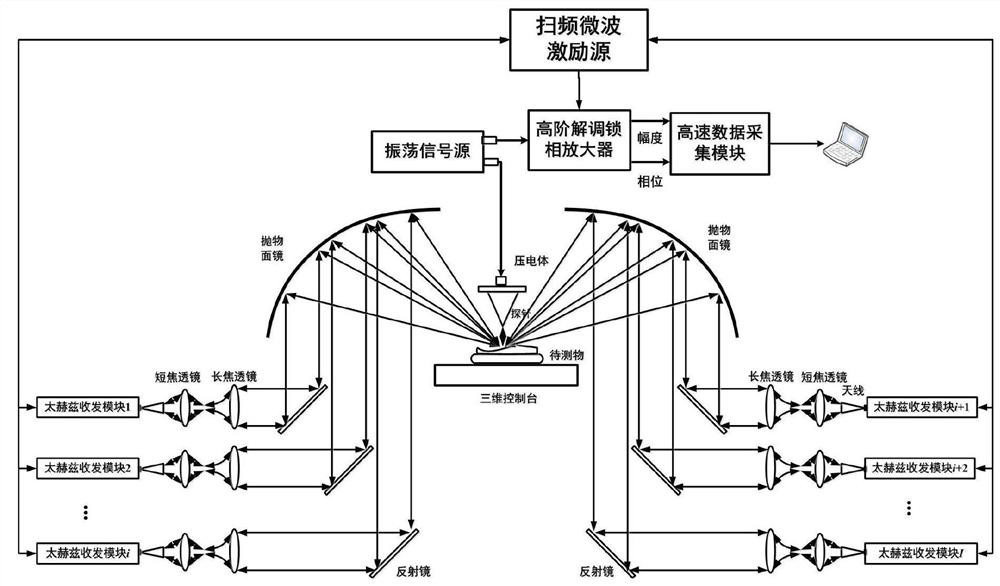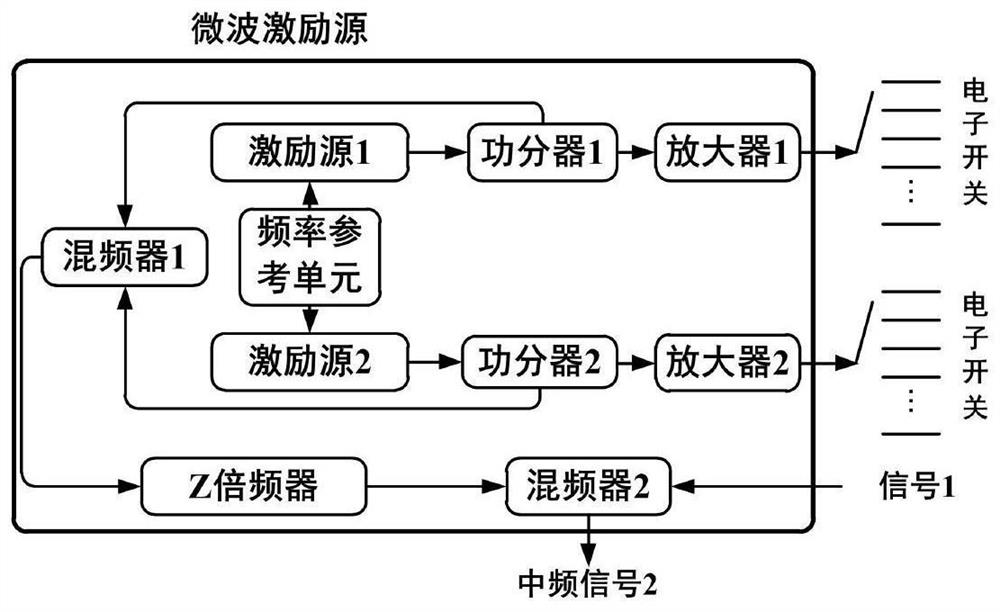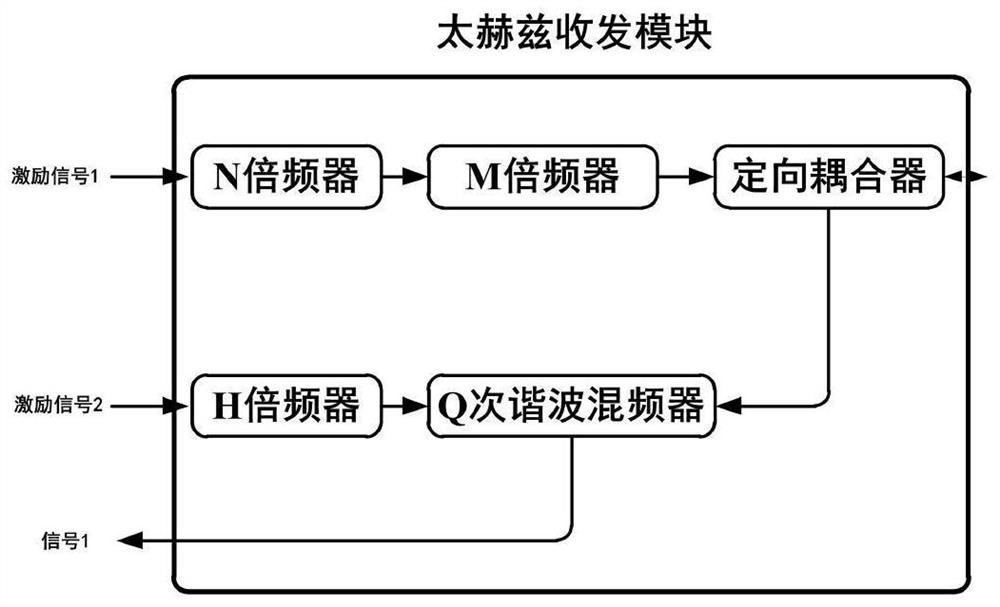Device and method for micro-nano defect detection of terahertz materials based on multi-frequency point information fusion
A terahertz material and defect detection technology, which is applied in the field of terahertz material micro-nano defect detection devices, can solve the problems of lack of multi-band terahertz signal fusion function, inability to obtain material physical and chemical information, and poor detection accuracy of micro-nano defects. , to improve the far-field detection efficiency of evanescent signals, realize the detection and analysis of micro-nano defects, and facilitate integrated extraction.
- Summary
- Abstract
- Description
- Claims
- Application Information
AI Technical Summary
Problems solved by technology
Method used
Image
Examples
Embodiment 1
[0076] This embodiment provides a micro-nano defect detection device for terahertz materials based on multi-frequency point information fusion.
[0077] A micro-nano defect detection device for terahertz materials based on multi-frequency point information fusion, including: a microwave excitation source, a terahertz transceiver module, a mirror combination module, a nano-probe, an oscillation signal source, a lock-in amplifier and a host computer; wherein,
[0078] The microwave excitation source is used to generate the input signal input to the terahertz transceiver module and the frequency mixing signal input to the lock-in amplifier;
[0079] A terahertz transceiver module for continuously radiating terahertz waves and receiving locally enhanced and modulated evanescent signals by nanoprobes;
[0080] The mirror combination module is used to tightly couple the terahertz beam radiated by the terahertz transceiver module at the tip of the nanoprobe, and reflect the locally e...
Embodiment 2
[0110] This embodiment provides a method for detecting micro-nano defects in terahertz materials based on multi-frequency point information fusion.
[0111] The method for detecting micro-nano defects in terahertz materials based on multi-frequency point information fusion adopts the above-mentioned device for detecting micro-nano defects in terahertz materials based on multi-frequency point information fusion as described in Embodiment 1, including:
[0112] Control the distance between the sample to be tested and the probe, and make the three-dimensional console move in nanometers;
[0113] The terahertz transceiver module continuously radiates the terahertz wave and receives the locally enhanced and modulated evanescent signal by the nanoprobe; the amplitude and phase information of the evanescent signal at a certain position of the sample to be tested is obtained through lock-in amplification and high-order demodulation;
[0114] The three-dimensional scanning console cont...
Embodiment 3
[0154] This embodiment provides a method for detecting micro-nano defects in terahertz materials based on multi-frequency point information fusion.
[0155] The method for detecting micro-nano defects in terahertz materials based on multi-frequency point information fusion adopts the above-mentioned device for detecting micro-nano defects in terahertz materials based on multi-frequency point information fusion as described in Embodiment 1, including:
[0156] Obtain the amplitude matrix and phase matrix of the evanescent signal of the sample to be tested;
[0157] According to the amplitude matrix and phase matrix of the evanescent signal of the sample to be tested, the terahertz near-field imaging algorithm is used to obtain the terahertz near-field image of the sample to be tested at this frequency;
[0158] Obtain the terahertz near-field images of the sample to be tested at all frequencies within the swept bandwidth at specific intervals, and use an information fusion algo...
PUM
| Property | Measurement | Unit |
|---|---|---|
| length | aaaaa | aaaaa |
Abstract
Description
Claims
Application Information
 Login to View More
Login to View More - R&D
- Intellectual Property
- Life Sciences
- Materials
- Tech Scout
- Unparalleled Data Quality
- Higher Quality Content
- 60% Fewer Hallucinations
Browse by: Latest US Patents, China's latest patents, Technical Efficacy Thesaurus, Application Domain, Technology Topic, Popular Technical Reports.
© 2025 PatSnap. All rights reserved.Legal|Privacy policy|Modern Slavery Act Transparency Statement|Sitemap|About US| Contact US: help@patsnap.com



